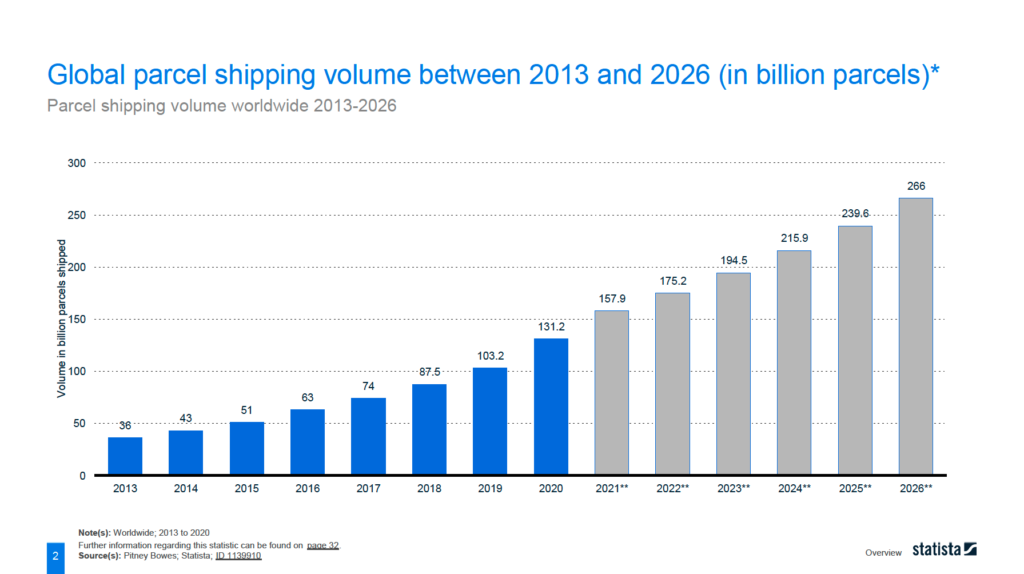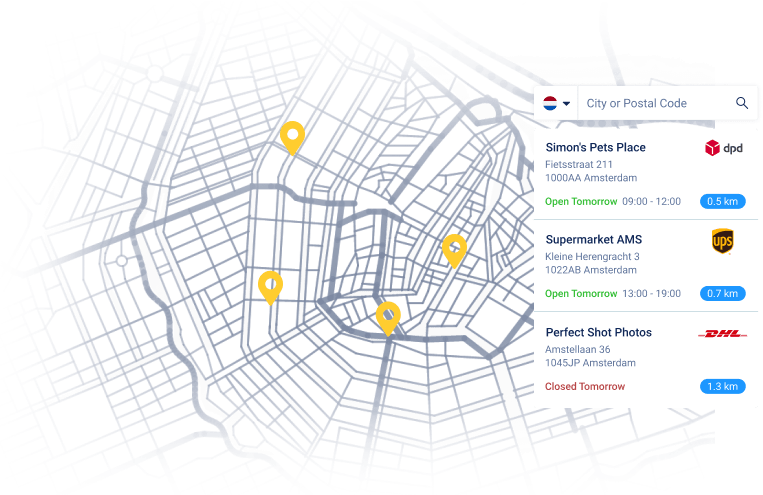Returns are one of the most challenging parts of managing an e-commerce business. But, let’s face it, they’ll always be part of your to-do list, so why not *shock alert* turn them to advantage?
This article will help you stay one step ahead of your competitors when it comes to returns management. We will talk you through the state of product returns and reverse logistics right now and offer insights into what you can expect in the near future.
E-commerce returns, a pain or advantage?
Making returns work for you, and your customer means keeping up to date on trends in customer expectations; the new tech and tools that can help streamline your process and give you valuable insights into buyer behaviors. Plus, let’s face it, it’s always useful to find out what’s proving successful for your peers.
We’ll look at the best ways to understand what your customers really want and how to manage their expectations. We will also explore which return services and policies will give your customers the outstanding experience you want to deliver. All while ensuring your business is efficient, streamlined, and financially and environmentally sustainable.
That’s a lot to cover, so grab your favorite energizing drink and let’s get started!
The state of e-commerce returns in 2022
New tech, changes in customer behaviors, impacts of global pandemics, new customs and duties legislation…e-commerce retailers have a lot on your plates! Here are a few developments and trends in product returns to help you keep your finger on the pulse.
- Return rates are rising. In 2021 the National Retail Federation reported that US shoppers are expected to return more than US$761bn worth of goods purchased that year. This trend is reflected in a 2021 report from IMRG which found that a quarter of all consumers return between 5% and 15% of the items they buy online.
- Customers don’t want to pay for returns. In fact, our 2021 e-commerce survey revealed that many shoppers check the returns policy before placing an order, with 40% saying they will not order a product unless the returns period is at least 30 days. 74% of our respondents also stated they would not order at an online store if they had to pay for the return themselves.
- Reverse logistics are impacting sustainability programs. Longer return times, issues with storage and infrastructure and the fact that it doesn’t make financial sense to return lower value items are all impacting negatively on merchant’s sustainability efforts. Plus, some products like underwear just can’t be switched. This means more waste and less opportunity to recycle or reuse unwanted goods.
The figure below shows steep growth in shipping volumes. We can only expect that return rates will continue to rise as returns rates are between 5%-15% of all orders.
Returns have earned their own holiday
With pretty impressive gallows humor, UPS dubbed January 2nd as the unofficial “National Returns Day.” This so-called celebration received an upgrade to National Returns Week in 2021 when the carrier forecasted they’d receive 1.75m returned packages each day, an increase of 23% from 2020.
Best practices from large retailers
Recognizing that returns are a fact of life, a number of retailers are thinking outside the box (sorry) to up their returns game.
- Amazon now offers an extended return period during the peak season. For 2021 that meant most of the items purchased between October 1, 2021, and December 31, 2021, were eligible for return until January 31, 2022.
- Beautylish, a well-known cosmetic e-commerce company, has an extended return policy for 90 days and doesn’t ask the customers their reason for returning.
- Lazada, a marketplace powered by Alibaba, lets customers return items to merchants or through their platform, as long as a return request is filed within 15 days (for LazMall items) and 7 days (Non-LazMall items) from the date the items were received.
- Zappos gives its customers a very generous 365 days to return their items. Plus, they also offer a ‘Rapid Refunds’ service as part of their VIP program where the refund is issued as soon as the courier scans the return package.
The best options for efficient returns today
Of course, it is not always practical, or possible, to offer the kind of flexibility that retail giants like Amazon can. Plus, it’s not always doable to acquire one’s own rocket like Mr Bezos, but that’s another story.
Let’s look at some ways e-commerce retailers can streamline returns processes and save costs (and the planet) in 2022 and beyond.
1. Give your customers the right information, at the right time
Create robust, readable shipping and returns policy, and don’t bury it in some unnavigable part of your website. Tell your customers what they can expect from you on both this document and at key stages of the buyer journey; on product pages, customer service hubs, and so forth.
2. Get the right tech.
There’s a raft of great apps and platforms out there to help you manage returns. Many offer the ability to set shipping rules and automate processes, saving you time and money and mitigating costly errors with both sending parcels and managing returns.
Far from us to blow our own trumpet but in the spirit of the aforementioned Bezos, we know our own app has heaps of satisfied e-commerce customers. Why not find out how it works.
3. Include pre-created labels in the box.
This is highly appreciated by consumers, though it does impact your carbon footprint, unfortunately.
4. Offer paperless returns.
Your customers just need to get a QR code to hand in their return parcel. An elegant solution that also helps you minimize your carbon footprint. Hermes C2C and DHL in Germany already offer this service, as does Amazon through UK Post Offices.
5. Use Easy Return Solutions.
Easy Return Solutions (ERS) within the EU simplifies international returns by enabling merchants and customers to facilitate local drop-offs. They should help to mitigate issues with paying customs and duties twice. Find out more about ERS on our help center.
What to expect from e-commerce returns in the (near) future?
This is it for now, but what can we expect in the future? Can returns become even less of a hassle? Let’s look in our crystal ball and see what the future holds for e-commerce returns.
Free returns – are they still a “thing”?
There is an understandable customer appetite for low-cost or cost-free returns. In fact, a recent survey from Ivesp revealed that 79% of consumers want free return shipping.
However, our research shows that 44% of our clients charge a return fee. So, almost half of the clients that use Sendcloud’s return solution don’t offer free returns. The average return fee that they ask is €5.66 so there is a definite disparity between what retailers are willing to offer and what customers expect.
Also, some giants in the fashion industry like ZARA have already started charging customers for postal returns and they won’t be the last ones. The reason is that e-retailers are burning a lot of money to handle returns and environmental concerns are rising when it comes to unnecessary shipments.
Furthermore, Statista reported that just 8% of e-commerce companies in Europe and North America in October 2020 planned to introduce free returns in 2021. It will certainly be interesting to see how customer expectations and behaviors continue to impact free returns in the years ahead.
Increase in parcel lockers
Fully automated parcel lockers make both receiving and returning goods simple and straightforward. Chances are you’ve seen a parcel locker site on your travels around retail centers and travel hubs in the last year. You’ve probably used one or two yourself.
With the global smart parcel locker market size expected to exceed U.S$1bn by 2024, these handy customer-friendly contraptions might become a top choice for brands looking to improve returns processes and offer 24/7/365 convenience to their customers.
The power of service points for returns
I believe that in the future, we should think more in terms of open source when it comes to return solutions and locations. Currently, each carrier has its own service point network and most retailers offer a return solution by one carrier. The consumer preference, however, is to return parcels to a single place that is close by, regardless the carrier or retailer. Opening up our networks would make for a much denser network and increase customer satisfaction. We are definitely looking into the possibilities to make this work in the future. – Emiel Ton | DPD Netherlands
A rise in labelless returns
Labelless returns do what they say on the tin. Rather than receiving a label with every shipment, customers simply take their returns to the designated drop-off point, scan a barcode or QR code, provided by the retailer or carrier, and the label and shipping are handled from there.
Inpost and Hermes C2C are well-known examples of carriers in the UK that have already started implementing these out of home solutions, and Amazon is offering this service in the USA. Vinted is also adapting the labelless solutions for their users.
Local and last-mile carriers are on the up
The race for retailers to deliver swiftly to their customers has resulted in a rise in local and smaller carriers, or last-mile deliveries. We’ve all seen a sharp increase in bicycle couriers and food delivery companies which exploded during the pandemic. Their local focus enables them to offer greater flexibility to customers and can help support same-day delivery services.
While this delivery option is not yet prevalent in the product returns process, we predict that companies will be doing all they can to offer this as soon as possible, particularly in larger cities like New York, Paris and London where zipping around on a bike is far more cost-effective and energy efficient than a van battling with traffic. Which brings us neatly on to our next point…
Green returns will continue to be a key focus
So, not only do local deliveries have the potential to save retailers time and money, a study by Accenture predicted that last-mile delivery could lower emissions between 17 and 26% through to 2025.
Here are some other developments in green returns we could see in 2022.
- Increased focus on the end-to-end return process. The emphasis must be on facilitating green returns throughout the entire process. That means everything from the label to the packaging, the method of transport to the product being made fit to re-enter the supply chain.
- Choosing green shipping carrier(s). Most carriers offer green shipping options nowadays. UPS and Hermes offer carbon neutral delivery, DHL uses bicycles and e-vehicles for last mile delivery (in certain areas), DPD has committed to a 14% reduction in C02 emissions per parcel, and FedEx has committed to carbon neutral operations by 2040.
- Reducing the requirement for returns on certain items. If you sell products like underwear, very low value goods or particular health and beauty products and groceries, it doesn’t make sense to put your customer through the hassle of returns for something that will go straight in the garbage.
Your compensation strategy will depend on your business model and your customer expectations. Whatever you decide, make your stance very clear on your policy and product pages and provide extra info in FAQs via a chatbot facility.
Tackling returns: innovations in the market
When it comes to product returns the most successful companies will be the ones who innovate. Or work with companies that do.
As we mentioned earlier, it will be interesting to see how both retailers and shipping providers respond to changes in customer behaviors and expectations. Will the need to control costs win over driving customer satisfaction and loyalty or vice versa? Will there be a true winner and base of returns in the (near) future? Or will online retailers keep having differences in return policies that are very customer unfriendly?
Here are some interesting examples of return innovations in the e-commerce market.
In-store drop-offs at non-competing businesses.
We don’t know about you, but we love the idea of dropping off a return as part of a daily routine. The local coffee chain, drugstore, or fast food outlet, for example. You can bet the non-competing business will benefit too.
AI and machine learning technologies
New and emerging technologies like AI and machine learning are already doing great things to improve retailers’ understanding of customer behavior and providing recommendations based on past preferences.
They can also help businesses reduce returns by offering sizing recommendations, especially on items that have suffered a high amount of fit-related returns. There’s even AI that can help customers predict that they will return an item before they buy it and can prompt them to choose a more appropriate product.
You’ve probably also seen some cool examples of virtual fitting rooms on your travels, as well as home improvement VR showrooms like IKEA’s. These tools are bound to become more prevalent over the coming year as businesses seek to get a competitive edge, boost sales, and reduce returned items.
Forecasting returns after order placement
AI and machine learning can also help e-commerce retailers to plan ahead with returns and inventory management.
These tools can build a profile of each customer using their order history, credit scores, previous return rates and reasons for return (e.g wrong size) which will indicate the return ‘risk’ involved. This can help you customize marketing, plan stock levels, adjust pricing, and improve the way you manage your logistics and shipping processes.
How to overcome the hassle of returns
Aside from your mind-boggling at the sheer craziness of what machine learning and AI can do these days, you’re probably also wondering what you can do to overcome the hassle of returns. Don’t worry, we’ve got your back.
Here are a few developments from Sendcloud that can help you improve your product returns management in 2022.
- We offer a handy solution that enables stores from any size an efficient return solution with both our all-in-one software and API.
- ERP systems and fulfillment centers can be connected to our API to handle returns efficiently, no matter their current setup.
- We are partnering up with more carriers so it becomes easier to offer pick-ups for returns to your customers.
- You can set up return rules for different types of returns. Think of the best carrier for certain return types or countries. We will even enable the option to make your customers pay for the return when they select a certain reason like “I changed my mind”. This saves you time and reduces errors. It also feeds into your shipping analytics so you can identify trends in return types.
- You can offer the ability to reject or approve returns to avoid unnecessary returns and costs.
- You can enable return fees within your branded return portal to set any costs for returns for your clients. You can even ask different prices for different products in combination with return rules. For more information, please check this out.
Want to know more about our return solution? Check out our page about the possibilities within our software or via the API.
A final note
Managing returns isn’t easy. But if you get it right it is a powerful way to demonstrate your commitment to customer satisfaction and providing an exceptional customer experience. An efficient returns service also helps you plan inventory better and control costs.
Whatever challenges and opportunities this year has in store, the best course of action is always to listen to your customers and continue building the best end-to-end shipping and logistics processes you can to serve them. Good luck and let us know how you get on!
























